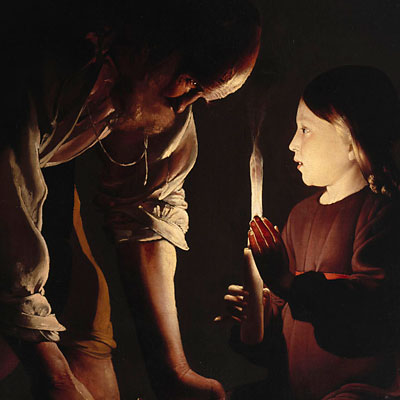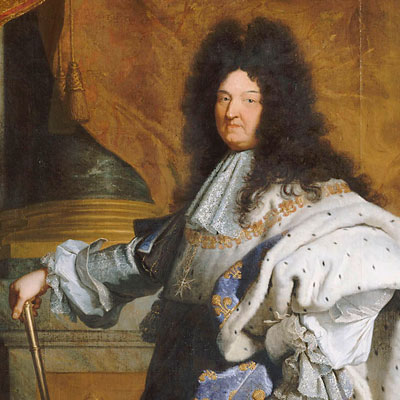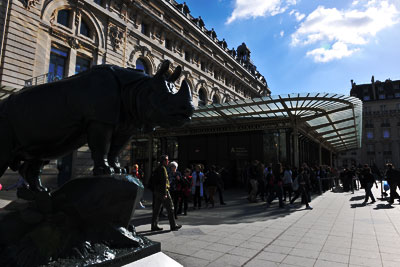|
|
|
Date : April 12 - June 15, 2014
Venue : Gallery N1
Hosted by: National Museum of China
Réunion des musées nationaux - Grand Palais
This
exhibition gives Chinese viewers the chance to discover masterpieces
that are symbolic of the museums they belong to. Each painting
represents an important era or artistic movement in France. The
paintings tell many stories: the stories they depict, but also stories
about the artists and what they wished to express. Although each
painting is presented independently, the group forms a history of French
art, from the Renaissance to after World War Two.
Francois
Ⅰ and Louis ⅩⅣ were both patrons of the arts who helped establish
French art collections. The portraits of these kings highlight the
State’s role in protecting and promoting artists.
Pablo
Picasso and Fernand Léger were both members of France’s pioneering 20th
century avant-garde scene. The two painters, who were both part of the
Cubist movement, show the different forms taken by modern art.
Despite
their differences, these artists--Clouet, Rigaud, Picasso and Léger--
all painted pictures of people, producing images that appealed to
viewers’ emotions. Whether they lived in a monarchy or a republic, they
used portraits to explore different ways of portraying the world and
reflections of reality.
Regardless
of the era or artistic movement, there are clear parallels between
artists such as La Tour and Soulages, or Fragonard and Renoir. Some
painters focused on light and dark, and others on love, seduction,
relationships between men and women--and were passionate about using
colour. These timeless themes linking classical and modern art tell the
story of an extremely rich heritage.
|
|
|
|
|
|
|
|
|
Jean Clouet
Portrait de François I er, roi de France
Paris, musée du Louvre
From
the 15th century onwards, the art of portrait painting spread
throughout the Western world. In Europe, monarchs used portraits to
influence how they were seen in life and after death. This portrait of
François I by Jean Clouet is one example.
In this painting, the
artist underlines the French king’s power by emphasizing his broad
shoulders, sword, Grand Master pendant of the Order of Saint Michael and
gold-embroidered clothing. François I is wearing a beret, but the crown
is also visible behind him.
François I was a major patron of
artists and the arts. He was fascinated by new ideas emerging in Italy
as part of the Renaissance movement. He invited many Italian artists to
France to work for him, including the painter Leonardo da Vinci. His
castle at Fontainebleau became a centre for artistic creation renowned
throughout Europe.
|
|

George de La Tour
Saint Joseph charpentier
Paris, musée du Louvre
Georges de la Tour is a talented painter of night scenes. In his paintings, the only sources of light are candles or firelight.
This
painting is of a carpenter working at night to the light of a candle
held by his son. The carpenter is Joseph, Jesus’ adoptive father in the
Christian religion. The child’s face is unnaturally bright, to reflect
his holiness. However, his dirty fingers and fingernails remind the
viewer that he is real.
The looks exchanged by the old man and
the child are central to the painting. Joseph’s tender gaze shows his
love for the boy. He is perhaps frowning because he is worried about his
son’s future. The wooden beam on which he is working is a reminder of
the cross on which Jesus died.
Although the painting has a
religious theme, the childhood scene appeals to universal emotions. The
subject matter and characters affect all viewers. Georges de la Tour has
produced a simple image that conveys the holiness in everyday life, an
approach encouraged by the Catholic Church.
|
|
Jean Honoré Fragonard
Le Verrou
Paris, musée du Louvre
Early
in his career, Fragonard painted serious works inspired by ancient
history. However, he later chose to focus on less serious subjects, such
as love and sensuality.
This painting is about forbidden passion
between a man and a woman. Its composition is remarkable: an invisible
diagonal line runs from the apple to the bolt. The apple symbolises sin
in the Western world, and the bolt reflects the idea that there is no
turning back. The painting seems to capture the moment when time
stops—the point of no return.
The scene was possibly inspired by
18th century libertine novels, which were condemned by the Church.
However, the painting was presented with another of Fragonard’s works
that had a religious theme, The Adoration of the Shepherds. This
second painting shows shepherds adoring the baby Jesus. Seen together,
the works present two different forms of love: the love that brings us
closer to God and the love between men and women.
|
|
|
|
|
|

Hyacinthe Rigaud
Portrait en pied de Louis XIV, âgé de 63 ans, en grand costume royal
Versailles, châteaux de Versailles et de Trianon
Louis
XIV changed the course of Western history. During his reign
(1643-1715), Versailles became the capital of France, and his castle
became an artistic centre renowned throughout the rest of Europe.
When
he was 63, Louis XIV decided to send a portrait of himself to his
grandson Philip V, King of Spain. He asked Hyacinthe Rigaud to complete
this painting. Extremely satisfied with the result, he then asked Rigaud
to paint a second copy for his own castle. In the end, both paintings
stayed at Versailles. It is the second painting that is displayed here.
In
this painting, Louis XIV appears with several symbols of power,
including the throne, the sceptre and the crown. His blue robes are
embroidered with the fleur-de-lis, the emblem of the French royal
family. These robes were worn during coronation, a religious ceremony
giving the king royal power. The composition of the painting became a
reference for official portraits in later years.
Hyacinthe Rigaud
became famous after painting this portrait. He had a real talent for
capturing the personality of his models, as well as the dignity of their
rank. He completed many portraits for members of the European nobility.
|
|
|
│MUSÉE D’ORSAY│
|
|

photography by Chen Lusheng More>>
The
Musée d’Orsay opened to the public on 9 December 1986. It is home to
many different forms of artistic creation produced in the Western world
from 1848 to 1914.
The museum has an unusual history. It is
located in central Paris, in the former Gare d’Orsay train station on
the banks of the Seine River opposite the Tuileries gardens. This train
station was built for the Universal Exhibition in 1900. In 1978, the
building was listed as a protected historical monument. The Musée
d’Orsay public institution was created to manage the museum project.
Since
2010, the Musée d’Orsay public institution has also run the Musée de
l’Orangerie, where Claude Monet’s famous Water Lilies are exhibited.
The
Musée d’Orsay has extensive collections in several fields: painting,
sculpture, decorative arts, architecture and photography. With
masterpieces by artists such as Renoir, Courbet, Cézanne, Monet, Rodin
and Van Gogh, it is an internationally renowned institution.
|
|

Auguste Renoir Le Bal du Moulin de la Galette Paris, musée d’Orsay
At
the end of the 19th century, Paris underwent major transformations,
like the rest of French society. To improve traffic, new roads were
built. Shops, cabarets and cafés became new meeting places, as seen in
many paintings.
During this period, several painters decided to
move to Montmartre, an area located on a hill to the north of Paris.
With its narrow streets and old houses, Montmartre had a village-like
atmosphere. Auguste Renoir was one of the first painters to set up here.
He discovered a population of workers and city dwellers who were
determined to enjoy themselves.
Artists, workers, friends and
passers-by met at guinguettes, open-air dance halls like the Moulin de
la Galette in this painting. This scene is typical of the atmosphere at
the time. The freshness and beauty of the dancers inspired Renoir, who
took pleasure in painting the era’s joie de vivre.
|
|
Auguste Renoir
La Balançoire
Paris, musée d’Orsay
Auguste
Renoir, Claude Monet and Camille Pissarro were all founding members of
Impressionism, an artistic movement that emerged in France in the second
half of the 19th century. The Impressionists’paintings were often
completed outdoors and featured bright colours. Although critics
attacked these works, they went on to gain recognition around the world.
Classical
painters liked to present major historical, mythological or religious
themes. The Impressionists chose to paint the world as they saw it,
often focusing on landscapes.
In this painting, Renoir captures a
particular time of day, when sunlight filters through the trees. The
shadows are blue and the sunlight is pink —the artist chooses colours
based on his impressions of the moment. Similarly, the young woman’s
white dress is actually many different colours of paint that are applied
quickly to the canvas. This style is typical of the Impressionist
movement.
|
|

Pablo Picasso
La Lecture de la lettre
Paris, musée Picasso
Pablo
Picasso was remarkable because he changed painting styles regularly
over the course of his life. It is difficult to believe that the same
artist painted Reading the Letter and The Matador.
As a pioneer
of the Cubist movement, Picasso used simple geometric forms to show the
world from different angles. However, after World War One, he returned
to a more classical way of portraying people, as in this painting.
Two
men are sitting side by side on a stone. They occupy all of the canvas.
Their suits contrast with their natural surroundings. The men are
friends —one has his arm around the other’s shoulders and they are
sitting close to each other. The letter and the book suggest writing and
literature.
Many consider this painting is of Pablo Picasso and
French author Guillaume Apollinaire. The two men met in Paris in 1904
and became great friends. This artwork, completed in 1921, is thought to
be Picasso’s tribute to his friend, who died in 1918.
|

Fernand Léger
Composition aux trois figures
Paris, Centre Pompidou, musée national d’Art moderne / Centre de création industrielle
Early
in his career, Fernand Léger focused more on geometrical shapes,
mechanisms and everyday objects than on people. Composition with Three
Figures, which was painted in 1932, was the beginning of a new era for
him.
From the 1930s onwards, Léger wanted to attract a wider
audience. To do so, he chose to work on larger canvases, focused on
figures, and used more realistic shapes. However, he did not paint these
figures to tell stories. Instead, he assembled the different shapes to
create a visual poem.
Léger’s work explores contrasts. This
painting is all about opposition: between animate and inanimate objects,
the colour yellow and the figures in black and white, and the volume of
the shapes and the one-dimensional background.
When Léger
painted Composition with Three Figures, he made no secret of his
personal and political views. He considered humanity, education and
living conditions were extremely important subjects. In 1936, the French
government bought Composition with Three Figures to recognise the
artist and his commitments. After World War Two, Léger officially joined
the French Communist Party.
|
|
Pierre Soulages
Peinture, 195 × 130 cm, 10 août 1956
Paris, Centre Pompidou, musée national d’Art moderne / Centre de création industrielle
The
French painter Pierre Soulages was born in 1919 and became a key figure
in abstract art. His work explores the colour black. His paintings do
not express messages but, at first glance, seem to be simple
associations of shapes and colours. Each of his paintings is an
invitation to take part in a unique experience.
He gives viewers
the freedom to interpret his paintings in their own way, in line with
their own culture, history, perceptions and feelings.
“The painting is not a sign, it is a thing. Through it, the senses come to be made, and unmade.”
PIERRE SOULAGES, Le prétendu métier perdu (the supposedly lost profession), 1981
|
|
|
|